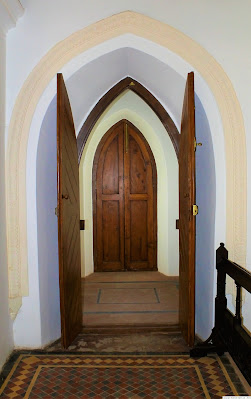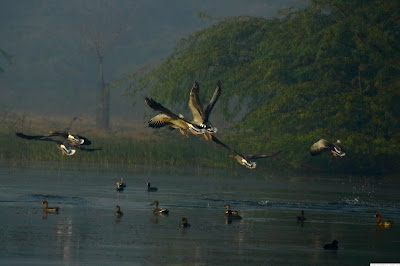It was before the pandemic that we noticed how the slates of the roof of the Epiphany Church of Gurgaon had begun to give way to the elements. Our immediate priority at that time lay in getting the slates replaced. However, what had begun as a project for mending the 150 plus-year-old roof ended up spiralling into a massive project of renovation of the entire church building. The challenges were enormous as cement could not be used for mending the walls. The Presbyter in charge, Pastor Daman Rodgers mentioned that the cement that was used was a mixture of ash and lime. Moreover, once the slates were removed, it was evident that the ravages of time had affected the entire structure and so it was not only the roof but also the walls, flooring and the wooden fitments that would have to be redone. Utmost care had to be taken in order to retain the historical identity and integrity of the structure. The church was built more than a hundred and fifty years ago for the British Garrison based in Gurgaon.
I visited the Church of the Epiphany Compound recently and I was amazed by the quality of the restoration work done. Everything had been done to restore the old church building to its original form, as it had existed more than one and a half centuries ago. The wooden doors that had been painted in thick layers of paint were stripped of the paint and their wooden finish was restored. The original brass fittings, locks and latches were stripped of coatings of paint and they were revealed in their original form. The switches were replaced with the age-old bakelite and ceramic switches.
It was indeed an onerous task for the Pastorate Committee and the Contractor to come to a consensus about how to go about the task of restoring the old church building. The Presbyter in charge, Revd. Daman Rodgers spoke about the numerous arguments that took place between the Building Committee, the Pastorate Committee and the Contractor who worked on the project. The final result, however, proves that it all ended up well. It is said that the walls and the structure do not make up a Church, but then, it has to be admitted that the old church building evokes a sense of awe and a vibe that results from being in an ancient structure - a testament of a fellowship that has lasted more than a hundred and fifty years.
The Church of the Epiphany, Civil Lines, continues to be an important landmark for the town of Gurgaon. It is venerated by all people alike, worshippers and those lighting a candle for blessings. Gurgaon has quite a long history. From being the home to Acharya Dronacharya to being a garrison town during the British occupation. Unfortunately, only a few monuments remain in their original form. The Kaman Sarai is all but gone. The Cricket Club with its library in Civil lines barely exists. Of another ancient structure, another Sarai or inn that existed in the past, located in the heart of the Sadar Bazaar Sabzi Mandi, only the outer walls remain. Of the prayer hall allotted to Indians during the late 1800s and early 1900s, also in the Sadar Bazaar, nothing much can be seen. It is in the context of its historical significance that I felt the need to do a write up of the restored Church building. It is evocative of the times that were, the techniques used to build structures, the brass-alloy casting techniques that gave the church its bell and of course the Anglo-Indian architecture.
I am indeed amazed by the work done by the conservationist and architect, Surbhi Anand Roy who strived to ensure that the original structure of the church was retained. The switches were sourced from Ambala, the brass locks were sourced from elsewhere. I was told by the Presbyter In Charge, Revd. Daman that she had fought throughout the restoration process arguing against shortcuts. A big hats off to her for understanding and ensuring that the original beauty of the church could be brought out only through conscious effort, painstaking research and a careful study of the structure itself!
 |























































